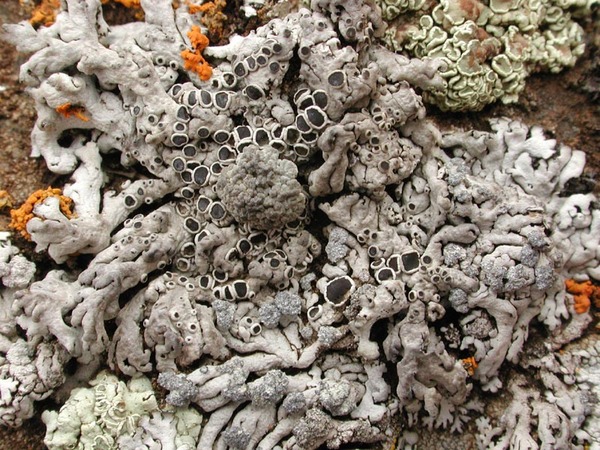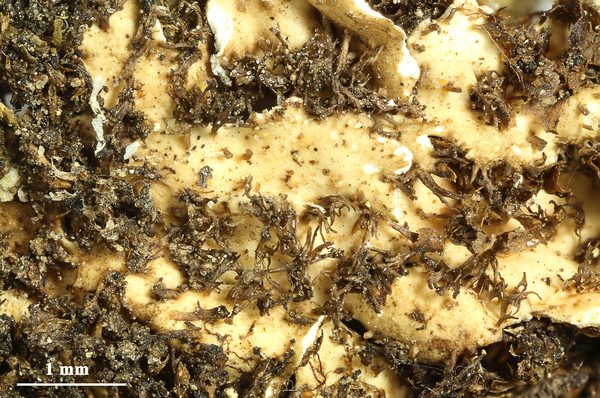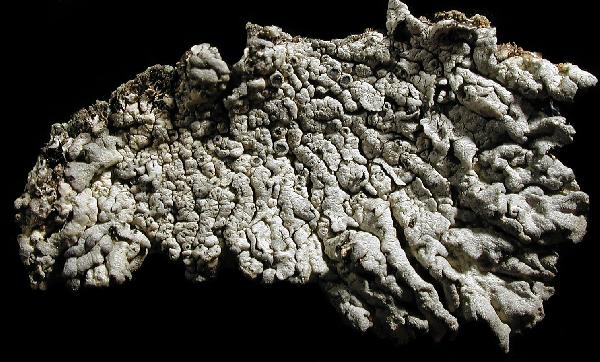Physcia phaea (Tuck.) J.W. Thomson
Beih. Nova Hedwigia, 7: 54, 1963. Basionym: Parmelia phaea Tuck. in Darlington - Flora Cestrica, ed. 3: 440, 1853.
Synonyms: Physcia aipolia subsp. phaea (Tuck.) Clauzade & Cl. Roux; Physcia melops Dufour ex Nyl.
Distribution: N - TAA, VA (Matteucci & al. 2015c).
Description: Thallus foliose, heteromerous, dorsiventral, narrow-lobed, closely adnate, forming orbicular to irregular, up to 5 cm wide rosettes, several thalli sometimes merging to cover larger surfaces. Lobes up to 1(-1.5) mm wide, flat or slightly convex, distinctly separated or more or less imbricate. Upper surface grey to dark grey or brownish grey, usually strongly maculate and more or less rugose. Lower surface white to brownish, with white to black, scattered, simple rhizines. Upper cortex paraplectenchymatous; medulla white; lower cortex prosoplectenchymatous. Apothecia common, lecanorine, up to 1.5(-2) mm across, with a brown to black, sometimes white-pruinose disc and a first crenulate, then smooth thalline margin. Asci 8-spored, clavate, very thin-walled, with a K/I+ blue, tall tholus penetrated by a faintly amyloid apical cushion, the wall K/I-, surrounded by a K/I+ blue outer layer, Lecanora-type. Ascospores: 1-septate, brown, ellipsoid, 15-21.5 x 6.5-11 µm, the wall thickened at apex and at septum, Physcia-type. Pycnidia black, usually abundant, immersed. Conidia subcylindrical, 4-6 x 1 µm. Photobiont chlorococcoid. Spot tests: upper cortex and medulla K+ yellow, C-, KC-, P+ yellow. Chemistry: upper cortex with atranorin; medulla with atranorin, zeorin and occasionally other triterpenes.Note: an arctic-alpine to boreal-montane, circumpolar lichen found on siliceous rocks slightly manured by birds, with optimum above treeline, up to the nival belt in the Alps. The record from Emilia by Valcuvia & Delucchi (2001), being dubious, is not accepted here.
Growth form: Foliose, narrow lobed
Substrata: rocks
Photobiont: green algae other than Trentepohlia
Reproductive strategy: mainly sexual
Commonnes-rarity: (info)
Alpine belt: very rare
Subalpine belt: extremely rare
Oromediterranean belt: absent
Montane belt: absent
Submediterranean belt: absent
Padanian area: absent
Humid submediterranean belt: absent
Humid mediterranean belt: absent
Dry mediterranean belt: absent
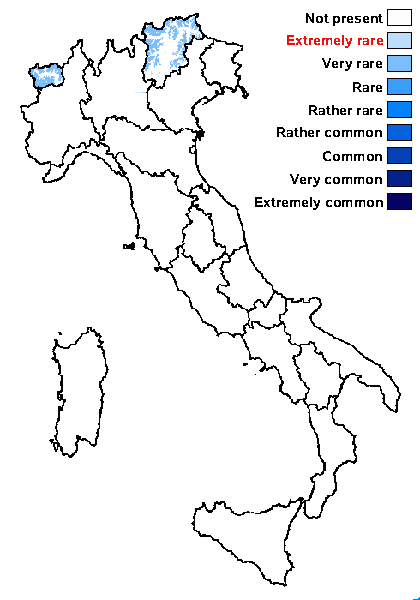
Predictive model
Herbarium samples


P.L. Nimis; Owner: Department of Life Sciences, University of Trieste
Herbarium: TSB (28992)
2001/12/15
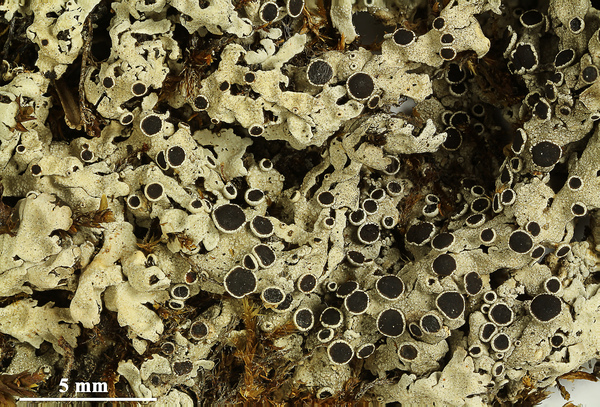

Felix Schumm – CC BY-SA 4.0
[5729], Canada, Ontario, Discovery Trail, Sharbot Lake Provincial Park, UTM Grid Reference: c364300 495900. Frontenac County. Easily removed from boulders. Leg. S.R. Olszewski, 08.08.1989 [No. 2493b], det S.R. Olszewski, 22.04.1990
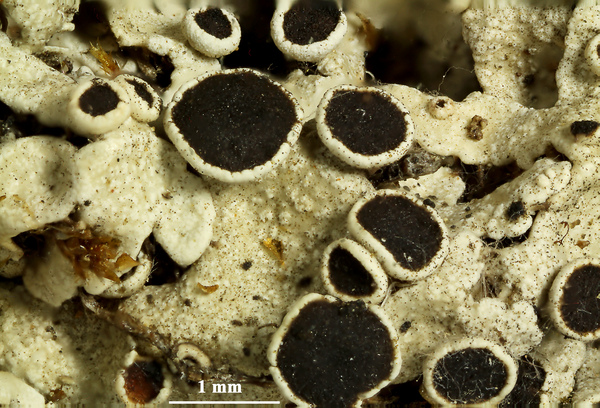

Felix Schumm – CC BY-SA 4.0
[5729], Canada, Ontario, Discovery Trail, Sharbot Lake Provincial Park, UTM Grid Reference: c364300 495900. Frontenac County. Easily removed from boulders. Leg. S.R. Olszewski, 08.08.1989 [No. 2493b], det S.R. Olszewski, 22.04.1990
Growth form: Foliose, narrow lobed
Substrata: rocks
Photobiont: green algae other than Trentepohlia
Reproductive strategy: mainly sexual
Commonnes-rarity: (info)
Alpine belt: very rare
Subalpine belt: extremely rare
Oromediterranean belt: absent
Montane belt: absent
Submediterranean belt: absent
Padanian area: absent
Humid submediterranean belt: absent
Humid mediterranean belt: absent
Dry mediterranean belt: absent

Predictive model
| Herbarium samples |


P.L. Nimis; Owner: Department of Life Sciences, University of Trieste
Herbarium: TSB (28992)
2001/12/15


Felix Schumm – CC BY-SA 4.0
[5729], Canada, Ontario, Discovery Trail, Sharbot Lake Provincial Park, UTM Grid Reference: c364300 495900. Frontenac County. Easily removed from boulders. Leg. S.R. Olszewski, 08.08.1989 [No. 2493b], det S.R. Olszewski, 22.04.1990


 Index Fungorum
Index Fungorum
 GBIF
GBIF
